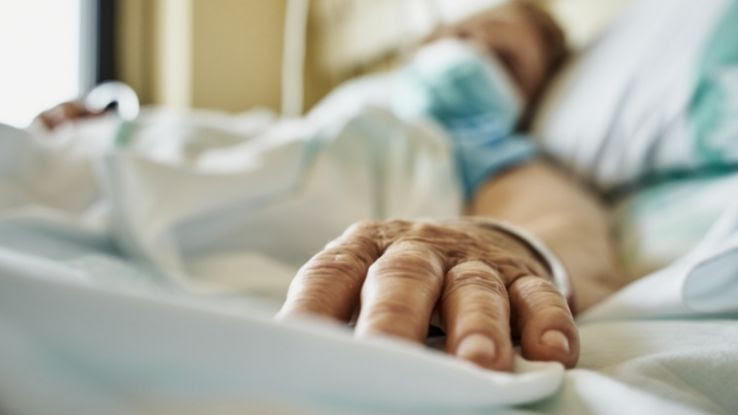10 Easy Facts About Pacific Prime Explained
10 Easy Facts About Pacific Prime Explained
Blog Article
Pacific Prime Things To Know Before You Get This
Table of ContentsThe smart Trick of Pacific Prime That Nobody is DiscussingThe Main Principles Of Pacific Prime Pacific Prime - An Overview10 Easy Facts About Pacific Prime Shown9 Simple Techniques For Pacific Prime

This is since the information were collected for a duration of solid economic performance. Of the estimated 42 million people who were uninsured, almost about 420,000 (about 1 percent) were under 65 years of age, the age at which most Americans end up being eligible for Medicare; 32 million were grownups between ages 18 and 65, around 19 percent of all grownups in this age group; and 10 million were kids under 18 years of age, about 13.9 percent of all youngsters (Mills, 2000).
These price quotes of the number of individuals without insurance are generated from the yearly March Supplement to the Present Populace Survey (CPS), conducted by the Demographics Bureau. Unless or else kept in mind, national quotes of individuals without medical insurance and percentages of the populace with various type of coverage are based upon the CPS, the most commonly made use of source of price quotes of insurance protection and uninsurance rates.
The Main Principles Of Pacific Prime

Still, the CPS is especially helpful since it generates annual estimates reasonably rapidly, reporting the previous year's insurance policy coverage approximates each September, and because it is the basis for a regular collection of estimates for even more than two decades, enabling evaluation of patterns in insurance coverage over time. For these factors, as well as the comprehensive usage of the CPS in other research studies of insurance coverage that exist in this record, we count on CPS price quotes, with limitations kept in mind.

The estimate of the variety of without insurance people increases when a population's insurance coverage status is tracked for numerous years. Over a three-year duration starting early in 1993, 72 million individuals, 29 percent of the U.S. https://issuu.com/pacificpr1me. populace, were without protection for a minimum of one month. Within a solitary year (1994 ), 53 million people experienced a minimum of a month without insurance coverage (Bennefield, 1998a)
6 out of every 10 uninsured adults are themselves used. Working does improve the likelihood that one and one's family members will have insurance, it is not a guarantee. Also members of family members with two permanent breadwinner have nearly a one-in-ten opportunity of being uninsured (9.1 percent without insurance price) (Hoffman and Pohl, 2000).
Everything about Pacific Prime
New immigrants account for a considerable percentage of individuals without health insurance coverage. One evaluation has actually attributed a significant section of the current development in the size of the united state without insurance population to immigrants that arrived in the nation in between 1994 and 1998 (Camarota and Edwards, 2000). Current immigrants (those who came to the USA within the previous 4 years) do have a high price of being uninsured (46 percent), yet they and their youngsters make up simply 6 percent of those without insurance coverage country wide (Holahan et al., 2001).
The relationship between health and wellness insurance and access to care is visit homepage well established, as recorded later on in this chapter. The relationship in between wellness insurance coverage and wellness outcomes is neither straight nor easy, a substantial professional and health solutions study literature links health insurance coverage to improved accessibility to care, much better quality, and enhanced personal and populace health condition.
Levels of analysis for examining the results of uninsurance. This conversation of medical insurance protection focuses mostly on the united state populace under age 65 due to the fact that virtually all Americans 65 and older have Medicare or various other public insurance coverage. It concentrates especially on those without any type of health and wellness insurance policy for any kind of length of time.
Pacific Prime for Beginners
The problems dealt with by the underinsured remain in some respects similar to those faced by the without insurance, although they are typically much less severe. global health insurance. Uninsurance and underinsurance, nevertheless, involve noticeably different policy issues, and the techniques for resolving them might differ. Throughout this study and the five records to adhere to, the primary emphasis is on persons without health and wellness insurance coverage and hence no support in paying for wellness care past what is offered through charity and safeguard establishments
Medical insurance is an effective aspect impacting receipt of treatment since both individuals and physicians react to the out-of-pocket cost of services - https://pacificpr1me.wixsite.com/my-site-1/post/pacific-prime-your-trusted-partner-in-international-health-insurance. Medical insurance, however, is neither essential nor enough to get to medical services. However, the independent and direct result of wellness insurance policy protection on access to health and wellness solutions is well established.
Others will obtain the healthcare they require even without health insurance policy, by paying for it expense or seeking it from suppliers that offer treatment cost-free or at extremely subsidized prices. For still others, medical insurance alone does not guarantee invoice of treatment as a result of various other nonfinancial obstacles, such as an absence of healthcare carriers in their community, minimal accessibility to transportation, illiteracy, or etymological and cultural distinctions.
The Greatest Guide To Pacific Prime
Official study concerning without insurance populaces in the United States dates to the late 1920s and very early 1930s when the Committee on the Cost of Medical Treatment generated a collection of records about financing physician workplace check outs and hospital stays. This concern became significant as the numbers of medically indigent climbed throughout the Great Depression.
Report this page